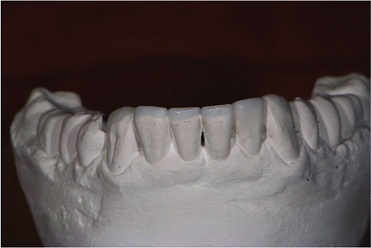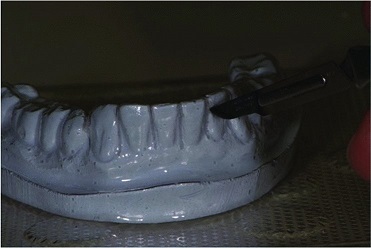Mandibular Anterior Direct Build-up: Injection Moulding Technique
Subir Banerji and Shamir B. Mehta
Principles
The principles for the restoration of the worn anterior mandibular dentition are no different to those for the management of the worn antagonistic teeth, as discussed in Chapters 9.3 and 9.4. However, pragmatically, worn lower anterior teeth can pose the treating clinician a few additional challenges.
Often, as a consequence of pathological tooth wear, patients may present with rather diminutive lower front teeth with little remaining hard tissue. The lack of a sufficient quantity and quality of tooth enamel renders adhesive bonding somewhat unpredictable. Under such circumstances, there may be a need to undertake surgical crown lengthening procedures, and to consider the prescription of conventionally (mechanically) retained indirect restorations, such as crowns or overlays.
The freehand application of direct resin composite to restore worn lower teeth may prove to be technically challenging, especially in cases of severe tooth surface loss. The use of a silicone index may also prove difficult where teeth are severely retroclined or in a patient with a shallow lingual sulcus and a raised tongue position. Effective moisture control can sometimes prove difficult.
The use of a thermoplastic template formed on a refractory cast of a diagnostic wax-up was briefly alluded to in Chapter 9.4. This involves the placement of resin composite into such a template, which is then seated over the worn teeth and the resin composite subsequently light cured. There are, however, an array of disadvantages associated with this protocol:
- Difficulty with the augmentation of the interproximal areas, with gross interproximal excess being encountered
- Difficulty with resin layering, resulting in monochromatic restorations, with risks of inadequate polymerisation due to incomplete light transmission to the basal layers of the material placed
- Air entrapment
- A large polymerisation exotherm
- Difficulty estimating the amount of material required, often resulting in under-filling and the subsequent development of voids or gross excess, necessitating lengthy and cumbersome refinement.
Nevertheless, the use of a modified template may overcome many of these drawbacks. A technique is described in this chapter involving the use of a guided resin injection moulding technique, which can be applied to restore the worn lower anterior dentition rapidly, predictably and effectively.
The use of indirect resin composites also offers an option, and is discussed further in Chapter 9.6.
Procedures
Once you have verified your diagnostic wax-up (Figure 9.5.1), form an accurate stone duplicate onto which the PVC (polyvinyl chloride) template will be fabricated. The thermoplastic stent most suitable for this purpose is of a 0.5 mm thickness. Templates may be developed by either vacuum forming or pressure forming. The former is advocated, as the use of pressure to form the template can result in a relatively inflexible matrix, which may be difficult to prepare, place and remove and may be vulnerable to breakage of the stone cast.


Figure 9.5.1 A 0.5 mm PVC stent formed on a duplicate model of a diagnostic wax-up
Once the stent has been adapted to the cast, trim the template using a pair of scissors. The template should extend past the second premolar teeth. Trim away excess material around the template margins. Gingivally, it is essential that there is at least 3–4 mm of material apical to the gingival margin to provide resilience. The template should be cut to follow a neat straight line, as opposed to a scalloped finish.
Stay updated, free dental videos. Join our Telegram channel

VIDEdental - Online dental courses


